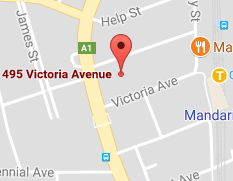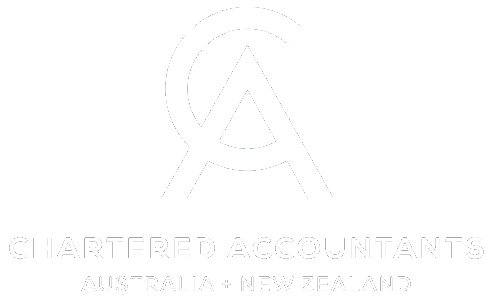On Tuesday, 9 May 2023, Treasurer Jim Chalmers handed down the 2023-24 Federal Budget. As with all Budgets, these are announcements only and have not been legislated. The details are still to be worked through, and both Houses of Parliament need to pass legislation before the announcements take effect.
1. PERSONAL TAXATION MEASURES
Medicare levy low-income thresholds
Effective from 1 July 2022, the Medicare levy low-income thresholds will increase for singles, families, seniors and pensioners to take into account recent movements in the CPI.
The new thresholds are listed below:
|
|
2021/2022 |
2022/2023 |
|---|---|---|
|
Singles |
$23,365 |
$24,276 |
|
Families |
$39,402 |
$40,939 |
|
Single seniors and pensioners |
$36,925 |
$38,365 |
|
Family seniors and pensioners |
$51,401 |
$53,406 |
For each dependent child or student, the family income thresholds will increase by a further $3,760, up by $141 from the existing amount of $3,619 per dependent child or student.
Existing reductions in tax rates – stage 3
No changes were announced in this Budget regarding the legislated Personal Income Tax Plan (PITP). Stage 3 of the PITP will commence from 1 July 2024 and as advised previously the tax rates will be as follows:
|
Rate |
2022-23 to 2023-24 |
From 1.7.2024 (unchanged) |
|---|---|---|
|
Nil |
$0 - $18,200 |
$0 - $18,200 |
|
19% |
$18,201 - $45,000 |
$18,201 - $45,000 |
|
30% |
N/A |
$45,001 - $200,000 |
|
32.5% |
$45,001 - $120,000 |
N/A |
|
37% |
$120,001 - $180,000 |
N/A |
|
45% |
$180,001 + |
$200,001 + |
Low income tax offset (LITO) |
Up to $700 |
Up to $700 |
2. BUSINESS TAXATION MEASURES
Small business instant asset write-off threshold
The threshold will be temporarily increased to $20,000 for small businesses with aggregated annual turnover of less than $10m for assets that are first used or installed ready for use between 1 July 2023 and 30 June 2024.
Currently, the temporary full expensing measure allows eligible businesses with aggregated annual turnover of less than $5 billion to fully deduct the business portion of the cost of eligible assets first held or installed ready for use between 6 October 2020 and 30 June 2023.
For assets that cost $20,000 or more, the small business simplified depreciation pool can still be applied. Depreciation is at 15% in the first income year and 30% each income year after.
Businesses that have previously opted out of applying the simplified depreciation pool will be able to re-enter the regime up to 30 June 2024.
Small business energy incentive
Businesses with annual turnover of less than $50m will be able to claim an additional 20% deduction on spending that supports electrification and more efficient use of energy. Eligible assets or upgrades will need to be first used or installed ready for use between 1 July 2023 and 30 June 2024. This will be limited to a maximum of $100,000 of expenditure, with the maximum bonus deduction being $20,000.
Eligible expenditure may be on new depreciating assets as well upgrades to existing assets. This will include investments in electrifying heating and cooling systems, installing batteries and upgrades to high-efficiency electrical goods.
Small business lodgement penalty amnesty
Small businesses with aggregate turnover of less than $10m will be given an amnesty which will remit failure-to-lodge penalties for outstanding tax statements lodged in the period from 1 June 2023 to 31 December 2023 that were originally due between 1 December 2019 to 29 February 2022.
Amendment to the electric car Fringe Benefits Tax exemption
As announced in last year’s Federal Budget, a fringe benefits tax exemption was introduced effective from 1 July 2022 for eligible zero or low emissions vehicles including electric cars, hydrogen fuel cell electric cars and plug-in hybrid electric cars.
The Government has announced that plug-in hybrid electric cars will cease to benefit from the fringe benefits tax exemption, effective from 1 April 2025. Arrangements involving plug-in hybrid electric cars entered into between 1 July 2022 and 31 March 2025 remain eligible for the exemption.
Reduction of tax instalments for small businesses
The Government will reduce the GDP adjustment factor used to calculate Pay As You Go (PAYG) and Goods and Services Tax (GST) instalments to 6% for the 2023-24 income year. The GDP adjustment factor would otherwise be 12% if the current formula was applied.
The measure will apply to instalments relating to the 2023-24 income year which fall due after the enabling legislation receives Royal Assent.
Increased amendment period for small businesses
From 1 July 2025, the two year amendment period for small businesses’ income tax returns will be extended to four years – a measure aimed at reducing the burden on small businesses wishing to revise their income tax returns.
15% minimum rate of tax on large multinational groups
Large multinational groups that have global revenue of A$1.2 billion or more will be subject to a 15% minimum tax rate. This will be achieved as follows:
- For financial years starting on or after 1 January 2024, Australian parent entities of large multinational groups will be subject to a top up tax in Australia where they have global income that is subject to an effective tax rate of 15% or less.
- For financial years starting on or after 1 January 2025, this will be expanded so that Australian subsidiaries of large multinational groups will be subject to a top up tax in Australia on global income where no other country has imposed a top up tax to ensure all global income is effectively taxed at 15% or more.
In addition to this, Australia will impose a top up tax on any Australian income that is subject to an effective Australian tax rate of less than 15%.
The introduction of a 15% minimum tax rate is Australia’s response to the OECD / G20’s ‘Pillar II’ recommendations, which target the potential underpayment of tax due to the ‘digitalisation’ of the economy.
3. SUPERANNUATION AND RETIREMENT MEASURES
Reduction of superannuation concessions
From 1 July 2025, Government will reduce the tax concessions available to individuals with a total superannuation balance exceeding $3 million.
Broadly, where an individual’s total superannuation balance exceeds $3 million at the end of a financial year, an additional tax rate of 15% on the amount of earnings relating to the proportion of their balance that exceeds $3 million will be applied. A formula which calculates a deemed earnings amount which includes notional (unrealised) gains and losses, not just actual realised gains and losses will be used.
Increasing the payment frequency of employer Superannuation Guarantee contributions
From 1 July 2026, employers will be required to pay an employee’s Superannuation Guarantee entitlements on the same day that they pay the employee’s salary and wages.
Currently, Superannuation Guarantee liabilities are payable on a quarterly basis and are not aligned with the frequency of salary and wages payments.
Superannuation Guarantee set to continue to increase to 12%
The Superannuation Guarantee rate is scheduled to increase as previously legislated from the current 10.5% to 11% from 1 July 2023. It will then increase to 11.5% from 1 July 2024 and to 12% from 1 July 2025.
Minimum pension drawdowns return to original rates
From 1 July 2023, the minimum drawdowns for account-based pensions (and similar products) will revert back to their original rates.
Superannuation fund members who receive these types of pensions are required to draw down a minimum amount each year, with that minimum amount based on the member’s age and a percentage of their pension account balance (see table below). During the covid pandemic, the Federal Government temporarily reduced the minimum annual payment required for account-based pensions (and similar products) by 50% from 1 July 2019 to 30 June 2023.
|
Age at 1 July |
Temporary minimum amount from 1 July 2019 to 30 June 2023 |
Minimum amount from 1 July 2023 onwards |
|---|---|---|
|
Under 65 |
2% |
4% |
|
65-74 |
2.5% |
5% |
|
75-79 |
3% |
6% |
|
80-84 |
3.5% |
7% |
|
85-89 |
4.5% |
9% |
|
90-94 |
5.5% |
11% |
95 and over |
7% |
14% |
4. OTHER MEASURES
Energy bill relief
The Government will work with Territory and State Governments to provide $3 billion of relief towards the cost of household electricity for eligible households and businesses.
Expanding eligibility for Parenting Payment (Single)
The Government will expand the Parenting Payment (Single) to primary carers, 91% of whom are women, until the youngest child turns 14.
Paid Parental Leave and early childhood education and care
Cheaper Child Care and Paid Parental Leave changes take effect from July 2023.
From 10 July this year, families earning under $530,000 will receive an increased child care subsidy.
From 1 July this year, Parental Leave Pay and Dad and Partner Pay will combine into a single 20 week payment. A new family income test of $350,000 per annum will see nearly 3,000 additional parents become eligible for the entitlement each year.
The above summary is a very small snapshot of the 2023-2024 Federal budget. If you would like to know more about any of the above or any other matters concerning this budget please contact your StewartBrown Manager or Partner for assistance.



